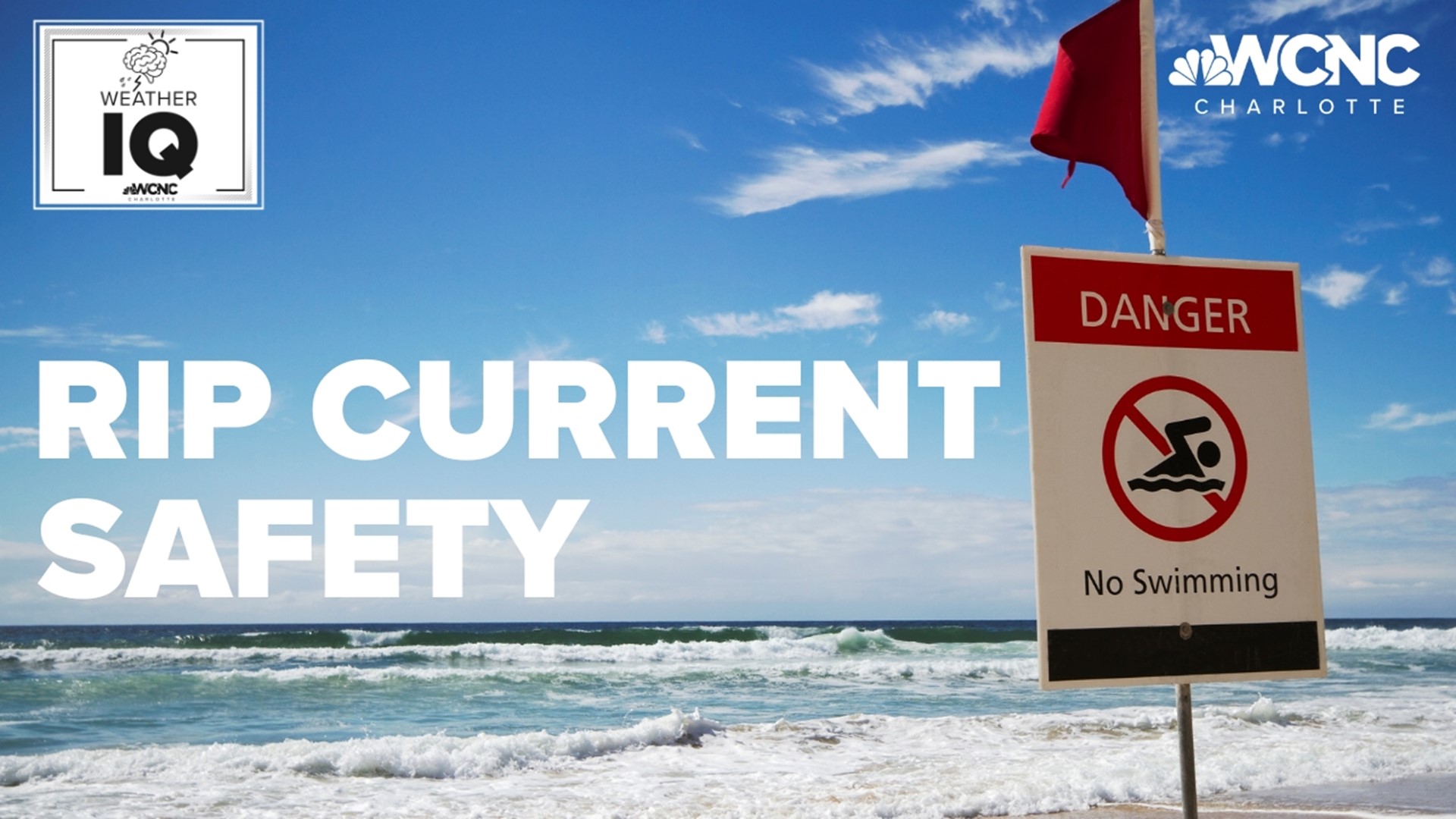MOREHEAD CITY, N.C. — Packing your bag for a beach day is extremely important. Sunscreen keeps your skin safe, sunglasses and hats keep the sun at bay, and towels keep you dry!
But don't forget to pack your awareness and tips on how to stay safe from rip currents.
A rip current is a narrow channel of fast-moving water that can reach speeds up to eight feet per second. This is faster than an Olympic swimmer!
Almost 200 people have died in the Carolinas due to rip currents since the year 2000. And those impacted are rarely from coastal communities.
In fact, Erik Heden -- the Warning Coordination Meteorologist at the National Weather Service in Morehead City -- tells us that number is only 20%. He says the other 80% are residents of inland counties across the county – including North and South Carolina.
Heden also tells us rip currents are the #1 weather-related killer in the United States.
"Rip currents don't pull you under -- they're very narrow, they pull you out. And your natural reaction is to try to fight and go back towards shore," he said.
But you've seen the news stories. Eventually, fighting against the current can wear a person out and often results in drowning. This is why experts say every year knowing what not to do is as important as what you should do.
DON'T: Fight against or swim against the rip current back toward shore.
DO: Swim parallel (horizontally) to the shore. This breaks the grip of the rip current and eventually gets you away from it.
(Note: Floating is also an option, but Heden says they don't encourage floating because swimming parallel gets you away from the rip current faster.)
For the latest weather alerts, download the WCNC Charlotte mobile app and enable push notifications.
Here's another important tip, too: don’t let a nice day fool you. It’s almost impossible to see a rip current unless you’re elevated above the water, like a lifeguard stand.
"Rip currents are different. They can occur on really nice beach days, the winds can be light can be sunny out, no thunderstorms, perfect to get out in the water," Heden said.
The Carolina coastline is also unique because part of it juts out where the Outer Banks is. This allows storms sometimes thousands of miles off the coast to produce swells that can reach our beaches. Heden said it doesn't have to be a hurricane making a direct impact on our area.
"That swell reaches the coastline. And we've seen that usually a handful of times each year so we don't need a direct landfall from a tropical system to produce dangerous rip currents in our area," he said.
The key is knowing before you take that trip to the beach, whether it's a day or a week. Check the local forecast, adhere to beach warning flags, and if possible – only swim at beaches where lifeguards are present.
Contact Brittany Van Voorhees at bvanvoorhe@wcnc.com and follow her on Facebook, Twitter and Instagram.
WCNC Charlotte’s Weather IQ YouTube channel gives detailed explainers from the WCNC Charlotte meteorologists to help you learn and understand weather, climate and science. Watch previous stories where you can raise your Weather IQ in the YouTube playlist below and subscribe to get updated when new videos are uploaded.

